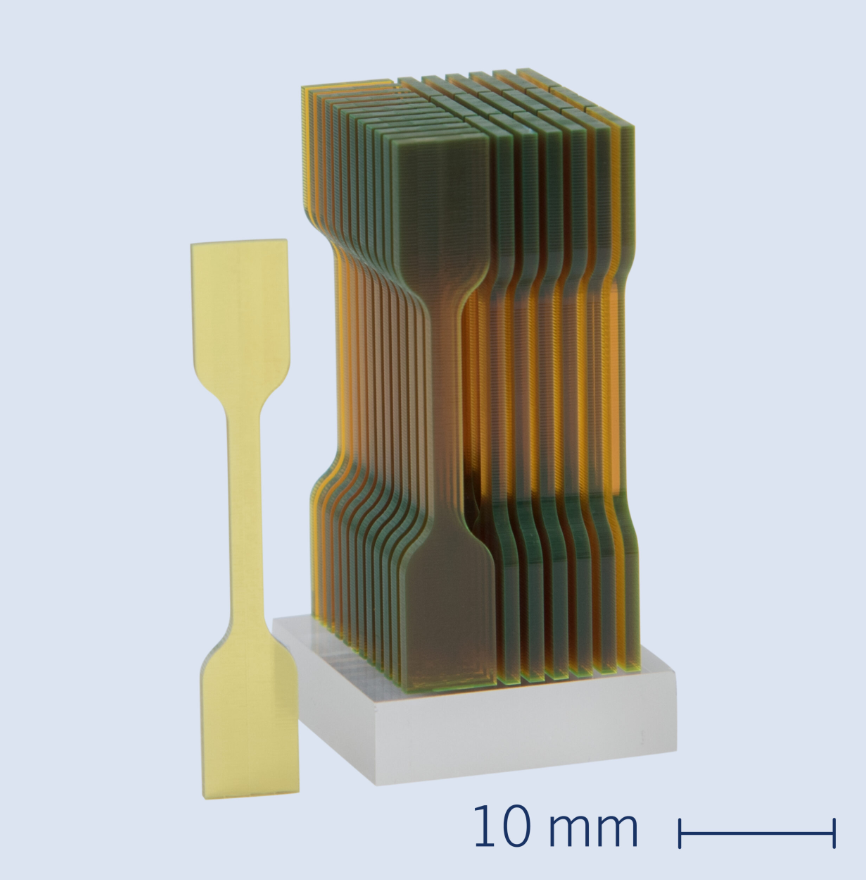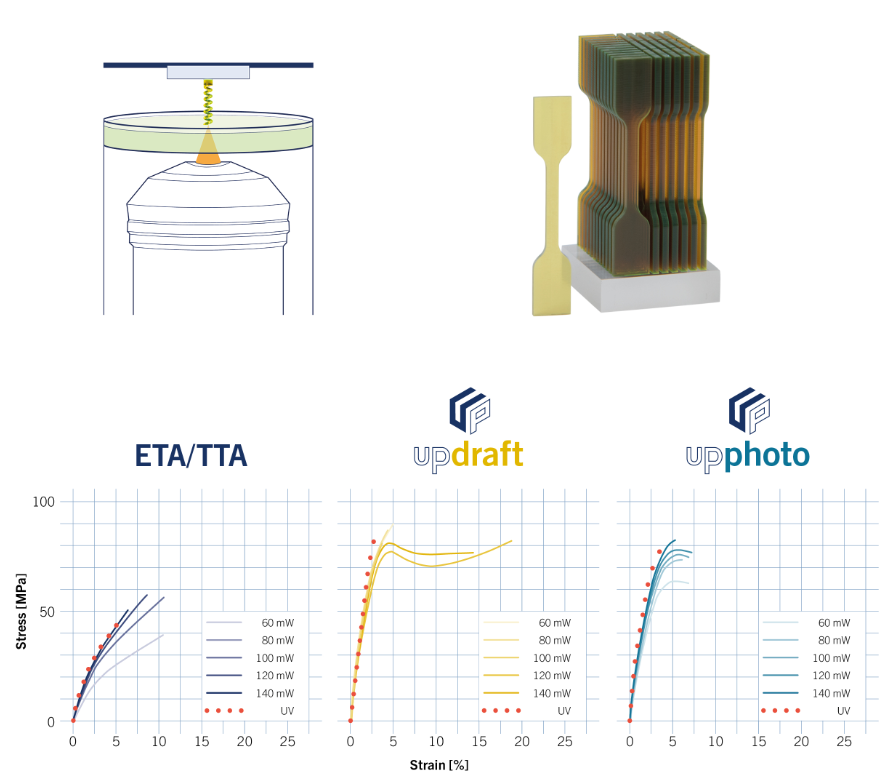Researchers from the Technical University Vienna (TU Wien), California Institute of Technology (Caltech), RWTH Aachen University, and materials experts from UpNano have conducted a comprehensive study regarding two-photon polymerization (2PP) 3D printing.
Published in Advanced Materials, this study involves the first-ever testing of mechanical properties in bulk specimens via 2PP 3D printing, utilizing standardized methods. The team assessed a range of mechanical properties, including tensile, flexure, hardness, creep, and fracture behavior. For this study, the researchers leveraged UpNano’s NanoOne 2PP 3D printer, and UpPhoto and UpDraft high-performance resins, for efficient upscaling.
Bernhard Küenburg, CEO of UpNano says, “Currently, there is no accepted standardized test method for micro- or nanoscale 2PP 3D-printed parts. But even if there were, the mechanical properties of a large-scale part could not simply be extrapolated from such small-scale samples. Therefore, the work of the TU Wien team and colleagues is a real breakthrough on the way to the industrial application of 2PP 3D printing.”
Additionally, other materials used were ETA/TTA—ethoxylated (20/3)-trimethylolpropane triacrylate (ETA) in combination with trimethylolpropane triacrylate (TTA). Notably, UpNano’s materials exhibited superior material quality compared to ETA/TTA, with both materials undergoing immediate full curing post-printing, thus eliminating additional post-treatment.

Standardized testing enables the characterization of large-scale 2PP 3D printed parts
As per the researchers, 2PP 3D printing stands out as a potent and high-resolution technology. The latest iteration of 2PP 3D printers combines exceptional high resolution with high production speed, exceeding 450 mm3/h, facilitating the production of substantial structures extending to several centimeters in dimensions. Consequently, 2PP 3D printing emerges as an appealing option for both industrial applications and large-scale production.
Consequently, the importance of standardized methods for assessing the mechanical properties of 2PP 3D printed parts is on the rise. Through this research, the team has achieved a significant milestone by successfully applying standard test methods to macroscale 2PP 3D printed components, such as ISO-standard test specimens measuring 35 mm, for the first time. This achievement provides invaluable insights into the mechanical properties of these printed parts.
To meet the production speed necessary for large samples, the team utilized 10x or 5x objectives mounted on a NanoOne printer. Presently, this stands as the fastest commercially available 2PP 3D printer on the market, capable of printing over 15 orders of magnitude concerning print volume, says the company.
Moreover, UpPhoto’s and UpDraft’s 2PP 3D printing holds an edge over alternative light-based 3D printing methods. It produces fully cured and robust parts right after printing, eliminating the necessity for post-curing. This feature is particularly advantageous for 3D printing microfluidic devices, enabling the creation of intricate internal microchannel structures.

Enhanced manufacturing with 2PP 3D printing
In recent years, other institutes have also actively conducted research related to 2PP 3D printing technology. For example, the University of Birmingham and the University of Southern Queensland researchers utilized micro-3D printing, particularly the 2PP 3D printing process to create microneedles. 2PP enables precise fabrication of complex microstructures, finding applications in microfluidic devices, photonics, and medical devices. The team optimized the 2PP process using a Nanoscribe Photonic Professional GT 3D printer, achieving a laser power of 80mW, a print speed of 50,000µm/s, and slicing distances of 0.5-0.7µm. The microneedles featured side channels for drug delivery, yielding successful skin penetration tests on pig cadavers.
Researchers from the University of Freiburg and Nanoscribe leveraged a 2PP system to fabricate glass silica microstructures with submicrometer resolution. Using their ‘Glassomer’ polymer-based resin, the team achieved a surface roughness of 6 nanometers, significantly less than typical glass parts. The method involved in the study utilized a unique Glassomer silicate nanocomposite, which was improved by increasing chemical crosslinking to enhance transparency and stability, making it more suitable for 3D printing glass-like structures
What 3D printing trends do the industry leaders anticipate this year?
What does the Future of 3D printing hold for the next 10 years?
To stay up to date with the latest 3D printing news, don’t forget to subscribe to the 3D Printing Industry newsletter or follow us on Twitter, or like our page on Facebook.
While you’re here, why not subscribe to our Youtube channel? Featuring discussion, debriefs, video shorts, and webinar replays.
Are you looking for a job in the additive manufacturing industry? Visit 3D Printing Jobs for a selection of roles in the industry.
Featured image shows a breakthrough in the material characterization of micro-components – ISO-standard test specimens for tensile material testing, with a height of 35mm, printed using the NanoOne 2PP 3D printing platform by UpNano. Photo via UpNano.



